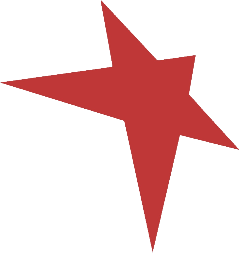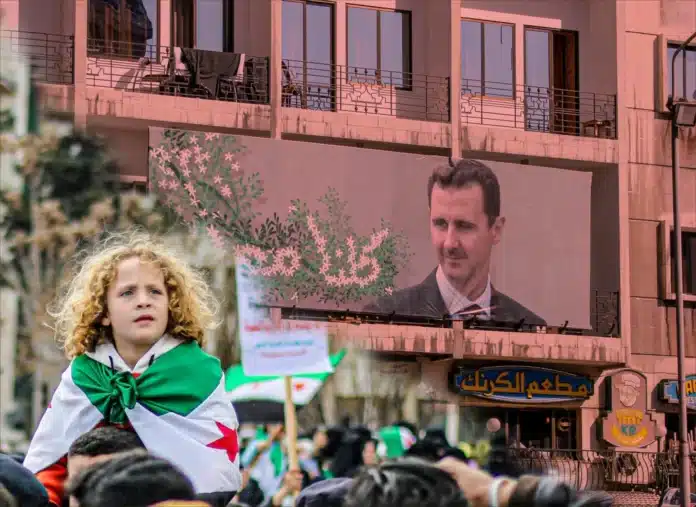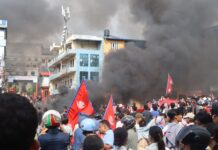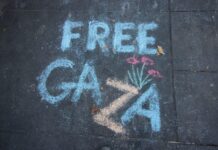The truth is that neither the victorious Islamist ‘rebels nor the imperialist powers involved on both sides represent the interests of the region’s people. Workers, the poor and the oppressed in Syria must build and organise their own way forward.
Per-Åke Westerlund, ISA International Political Committee
(This article was first published on 10 December 2024)
Jubilant crowds on the streets of Damascus have been celebrating what until recently seemed unthinkable — the fall of Bashar al-Assad’s hated regime. The Syrian army collapsed while the regime’s over-burdened allies in Moscow and Tehran could only look on, hanging their erstwhile ally out to dry. The lightning offensive by Turkish and US-backed right-wing Islamist forces revealed the dictatorship’s fundamental weakness: that it lacked any kind of meaningful support and anchorage.
What will happen after the initial shock and celebration on the streets, which is echoed by Western media and governments alike? The truth is that neither the victorious Islamist ‘rebels nor the imperialist powers involved on both sides represent the interests of the region’s people. Workers, the poor and the oppressed in Syria must build and organise their own way forward.
The balance of power in the Middle East is fundamentally altered, with major international consequences: Iran’s ‘axis of resistance’ is fatally undermined, as is Putin’s Russia’s power base in the region. Erdogan in Turkey and Netanyahu in Israel have been strengthened, at least for now.
The Assad dictatorship fell like a house of cards
Uniforms and weapons left behind by soldiers and officers litter the streets and roadblocks. The presidential palace has been looted, as has the Iranian embassy. Both Assad’s Prime Minister and the Syrian state television channel, as well as Syrian embassies around the world, surrendered to the forces that took Damascus.
The weakness of the regime was already evident in the widespread hatred of it and strength on display in the initially peaceful and strong popular uprising in 2011, part of the revolutionary wave sweeping the region. Since then, the brutal civil war that followed and the deep social and economic crisis have wiped out all the dictatorship’s decisive strongholds. The ceasefire and temporary stabilisation established in 2020 relied on the military support of Russia’s bombers and Iranian-backed Hezbollah ground troops. Since then, the morale of the Syrian army has evidently collapsed
The Islamist militia Hayat Tahrir al-Sham (HTS), which has ruled Idlib province since 2020, only had to press the button, which happened on the day the ceasefire between Hezbollah in Lebanon and the Israeli state was signed. HTS had the green light from Erdogan, whose closer ally the ‘Syrian National Army’ (SNA) participated when HTS took the cities of Aleppo and Hama, and at the same time launched new military attacks against the Kurds in Rojava in north-eastern Syria.
The popular hope for change, to finally realise the seemingly impossible dream of getting rid of Assad, was crucial to the rapid development of events. Other armed groups followed the example of the HTS, and US-backed Islamist ‘rebels’ in the south were the first to arrive in Damascus. Assad fled as the streets filled with celebrating crowds.
After the respite of the 2020 ceasefire, the Assad regime was gradually accepted by rival despotic Middle Eastern regimes that had provided military support to the opposition during the civil war. In the spring of 2023, Assad was able to attend the Arab League summit again. He also kept a low profile after the Hamas attack on 7 October 2023 and Israel’s subsequent bombing campaign. As recently as this autumn, he reportedly told Hezbollah and Iran that he did not want to get involved in ‘their war’. His appeals to his former allies and Middle Eastern regimes for military support in the last week therefore yielded no results except for Russian aerial bombing during the assault on Aleppo. Both Russia and Iran evacuated citizens from Syria. Hezbollah had already withdrawn most of its troops to Lebanon earlier.
This was also a result of Russia’s war in Ukraine and the Israeli military’s attacks, which hit Hezbollah and thus Iran very hard. Netanyahu has now welcomed the fall of Assad as a further weakening of Iran, and the IDF has attempted to capitalise further with major air strikes in recent days and ground incursions by Israeli troops into Syrian territory in the Golan heights. This was initially announced as a “temporary” measure, before Netanyahu quickly doubled down on the move, alleging it “ensures our security and sovereignty” adding “the Golan will be part of the State of Israel for eternity”.
Turkey, along with Qatar, was the biggest sponsor of Islamist right-wing militias during the 9-year civil war in Syria. Arms came in through Turkey, which had as one of its goals to crush the Kurdish PYD and the form of autonomy established in Rojava. But in 2014–15, PYD’s armed wing YPG was able to repel the siege of the town of Kobane, which had been surrounded for more than six months by the Islamic State (IS). The YPG was supported by bombings from the US Air Force. The YPG later provided the main forces of the “Syrian Defence Forces”, which defeated IS in 2019. That the Kurds cannot rely on support from the US or other imperialist powers has been clear all along as the Turkish army (an important NATO power) has repeatedly attacked Rojava.
The 2020 ceasefire was negotiated by the regimes in Turkey and Russia, and was primarily about establishing a kind of independence for Turkey’s Islamist protégés in Idlib in north-west Syria while keeping Assad’s regime intact. Russia’s aerial bombardments would cease in return for the Islamists staying within designated borders. Hayat Tahrir al-Sham established a regime there under its leader Abu Mohammed al-Jolani. HTS emerged from the Nusra Front, which differed from both al-Qaeda and ISIS by presenting itself as a Syrian (i. e. nationalist) organisation rather than an Islamist cross-border force.
The HTS established its own dictatorial regime, including a military academy and arms production. The HTS was under Turkish patronage, but unlike the SNA, it was not directly controlled from Ankara. The two have cooperated to make money from border trade and now in the attack that toppled Assad. Erdogan’s power has been strengthened, but the real balance of power with the HTS is not clear.
Abu Mohammed al-Jolani has made statements about religious tolerance and respect for minorities. But there is no reason to trust him. The HTS is an undemocratic army that has just taken power. Promises of rights and elections are textbook statements from coup-makers. Since Assad’s fall, the HTS has imposed a curfew and called on the regime’s police and civilian authorities to continue until further notice. Meanwhile, their allies in the SNA have launched new military attacks against the Kurds in Manbij, on the unofficial border between Rojava and Turkish-controlled areas. At the same time, Kurdish troops reportedly drove the Syrian state army (formerly pro-Assad) out of the cities of Deir ez-Zor and al-Bukamal in the east.
When the Taliban returned to power in Afghanistan in 2021, ousting another paper tiger local regime which was hung out to dry by its foreign imperialist backers, they also made promises such as maintaining girls’ education and women’s right to work. These promises, aimed partly at pacifying Western imperialism and partly at preventing street protests while the new rulers consolidated, have since been gradually broken and oppression has worsened.
It is not clear what kind of regime will be established. The HTS dominates, but other armed militias will also vie for influence. With the mood of liberation that exists today, a new regime may behave cautiously for a while.
Workers and the oppressed need to organise as quickly as possible. Democratically organised cross-religious and cross-ethnic defence committees are necessary steps, as is workplace and neighbourhood organising, initiated by the working class as the most powerful collective force in the region. The 2011 revolt was strongest among young people, who made several attempts at organising with local coordination groups. But these focused more on social media and spreading information, rather than concrete organising and a clear programme.
Today, there is the danger of believing that a new regime, any regime, will lead to steps forward. When Assad responded to the original uprising with military force, Islamist militias became the dominant opposition force, with mass recruitment of young people. In the ensuing civil war, more than half a million people were killed and 12 million were forced to flee their homes.
The 2011 revolt, one of many ‘leaderless uprisings’ internationally, lacked working class organisation and a revolutionary programme. The movement grew, but lacked “a unified leadership that could represent the protesters, speak for the revolution, control the pace and message of the protests, and develop a strategy for the overthrow of Bashar al-Assad — or for the time afterwards”, summarised Aron Lund in his book Syria is Burning.
The lesson from Egypt in 2011, when the Mubarak dictatorship was overthrown, is that the counter-revolution will regroup and hit back. It bides its time in the military, and has the backing of both local capitalists and imperialism, whose power it serves. In both Egypt and Syria, senior officers are also powerful capitalists. In Syria, the danger is now greater because the overthrow of Assad was led by a military force, rather than a mass movement
On the surface, the fall of Assad is welcomed by governments and politicians in the West, while at the same time reminding them of their own fragility and weakness. They now talk about the need to ‘stabilise’ Syria, which is the same reason they propped up Assad’s regime for so long. The Syrian regime co-operated and supported the first US war against Iraq, in 1990–91. France — Syria was a French colony until 1946 — honoured Bashar Assad with the country’s highest civilian decoration when he took office in 2001. Bashar was then a very obedient follower of neoliberal capitalist policies and carried out major privatisations. Some 10 families benefited while up to three million lived in extreme poverty, laying the groundwork for the widespread discontent that led to the 2011 uprising.
Both Israel and the US have carried out massive bombing campaigns against Iranian-backed groups and remaining ISIS strongholds in the country. But above all, their actions are about demonstrating military power, thereby warning and continuing to repress workers and the oppressed in Syria and the region.
While the positions of Israel and Turkey have been strengthened in the short term, the main power in its bloc, US imperialism, will soon have a President Trump who recently said the US should not intervene in Syria — “not our fight”. However, that was before the latest dramatic shifts, and his tone could quickly change if, together with the Israeli government, he sees an opportunity for regime change in Iran. While much is still unclear, the likelihood of Trump pursuing an aggressive “maximum pressure” line against Tehran, including harsher sanctions and threats, has now increased. Tensions in the region have only increased since the fall of Assad. Israel has not achieved its goals with the war in Gaza and new ceasefire agreements will be fragile and temporary.
For Putin’s Russia, the fall of Assad is a major setback that once again punctures the image of strong Russian military power. This could have implications for other governments that rely on Russian backing, as in West Africa. The cumulative and severe blows to Iran’s regional power negatively affect both Russia and China in the global inter-imperialist struggle against the US-led bloc, while for the latter this “pyrrhic victory” could mean even greater problems ahead as the Middle East is further plunged into turmoil.
Dictatorships, crises and wars in the Middle East and beyond are the result of the capitalist system. Military power and economic exploitation go hand in hand. The only force that can break this is mass struggle led by the working class, equipped with a revolutionary socialist programme.
- Mass struggle for democratic rights for workers, women, Kurds and all the oppressed.
- Democratic defence committees across religious and ethnic lines. Democratic control over arms and armed groups.
- Hold those responsible in the state, police and military to account.
- Opposition to all imperialist intervention. Stop the bombings, withdraw all foreign troops.
- Stop all military attacks on Rojava.
- Bring natural resources and the key sectors of the economy under public ownership and democratic control.
- Reconstruction with housing and work for all. Raise minimum wages in line with the real cost of living.
- Build a revolutionary socialist party to fight for international socialism.
- For a socialist Syria, with the full right of self-determination for all peoples, in a socialist federation of the region.




